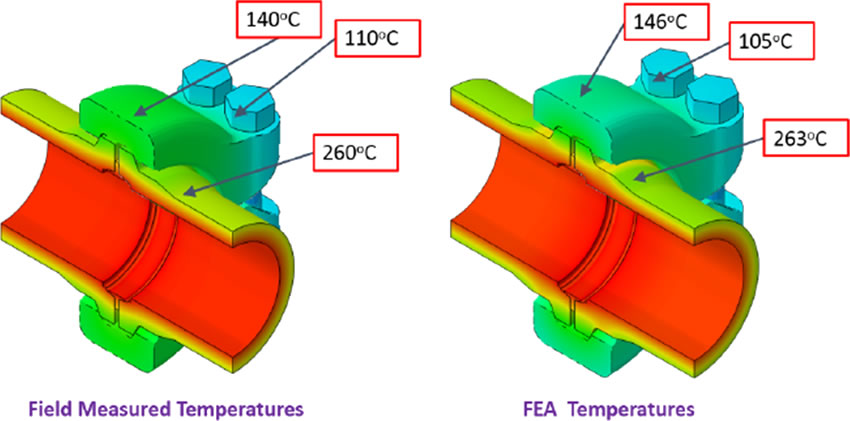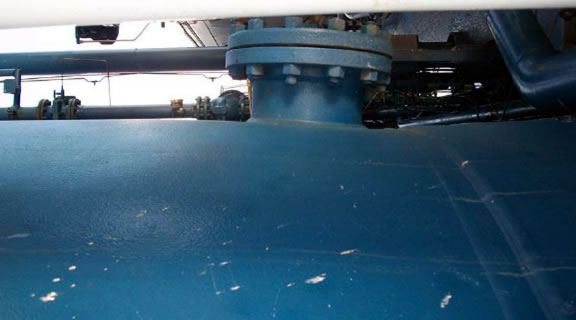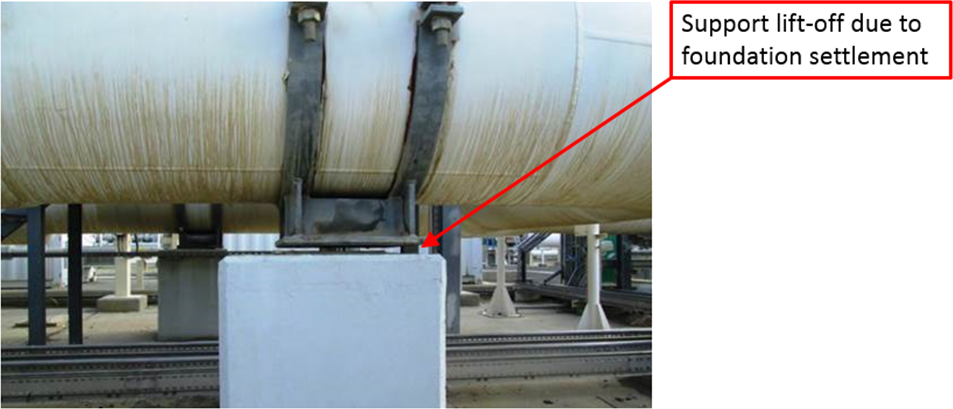Use of Fracture Mechanics for Fatigue Design
While fracture mechanics is used in fitness-for-service, FFS, for evaluation of crack like flaws that are detected and for evaluation of the potential for brittle fracture, it is also used in new design to evaluate fatigue life. The rules for high pressure vessels in Section VIII, Div 3 and ASME B31.3 Chapter X permit and sometimes require the use of fracture mechanics to evaluate the fatigue life of pressure vessels and piping.
The fatigue evaluation starts with the smallest detectable flaw that could remain in the equipment after the specified examinations are performed. The growth of this postulated flaw is simulated via fracture mechanics until the flaw reaches the critical crack size or reaches a FAD failure. The allowable number of design cycles is then the lesser of: the number of cycles required to reach 20 years, to reach 1/4 critical crack size, or half the number to reach the critical crack size. Use of nondestructive examination techniques with a high probability of detecting very small flaws, such as time of flight diffraction, TOFD, provides a longer fatigue life since the assumed starting crack is smaller. TOFD is described in a pdf download available on our affiliated NDE company, Sonomatic’s web page. Click here to access that document.
When there are more than one load condition, such as varying pressure cycles with varying external loads (to the extreme of ship motion cycles), then the crack growth needs to be evaluated for the load histogram. The life will depend upon the order of the loads. A common assumption is the loads occur in evenly spaced intervals. For example, if there are 10,000 cycles of load A, 100 cycles of load B, and 10 cycles of load C, then the histogram could be cycle of load C, cycle of load B, 100 cycles of load A, cycle of load B, 100 cycles of load A, etc. Load C would be repeated after 1000 cycles of load A and 10 cycles of load B.
Simulation of load histories is problematic in some fracture mechanics software. This is one of the reasons Becht Engineering developed its own fracture mechanics software. Click here to access information regarding this software, which is designed to easily evaluate complex load histories. The method for fracture mechanics evaluation outlined in ASME Section VIII Division 3, 2010 Edition with the 2011 Addenda, Article KD-4 and Appendix D is the basis for the general calculation approach. The stress intensity factor and the reference stress solutions provided by API 579-1/ASME FFS-1, 2007 Edition, Appendices C and D are used in conjunction with the ASME method. These rules are also referred to by ASME B31.3 Chapter X.
Fracture mechanics is also used to evaluate pressure equipment that is not at high pressure, such as pressure swing absorbers. It provides a distinct advantage in that as the design life is approached, a re-inspection can be done. If that re-inspection does not find any crack like flaws, then the entire original design life is reset. For example, if the original design life based on the assumed defect was 900 cycles, if at 800 cycles the equipment is inspected and no flaws equal to or greater than the original assumed flaw is found, then the remaining life becomes 900. This reset is not available in conventional fatigue analysis since the degree of fatigue damage cannot be measured, whereas crack growth can be measured.
Fracture mechanics is also adaptable to different environmental conditions because the crack growth rate can be altered. ASME Section VIII Division 3 requires crack growth rate testing of different heats of steel in the environment that the vessel will see in service. For instance, high pressure hydrogen storage tanks require different C & m coefficients for calculating the crack growth rate (da/dn). Becht’s software allows for varying C & m coefficients for both the mean stress value, Rk, and also the range of stress intensity, Δk. Our range of services can cover designing the crack growth rate tests, curve fitting the data, implementing into our Software and then ultimately calculating a fatigue life that is unique to the vessel material and in-service conditions.






